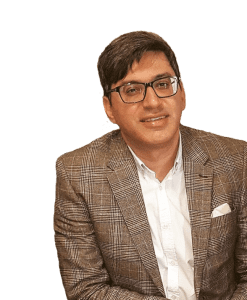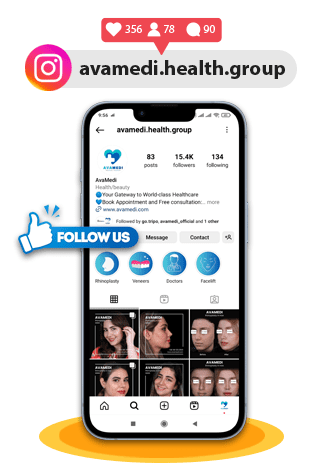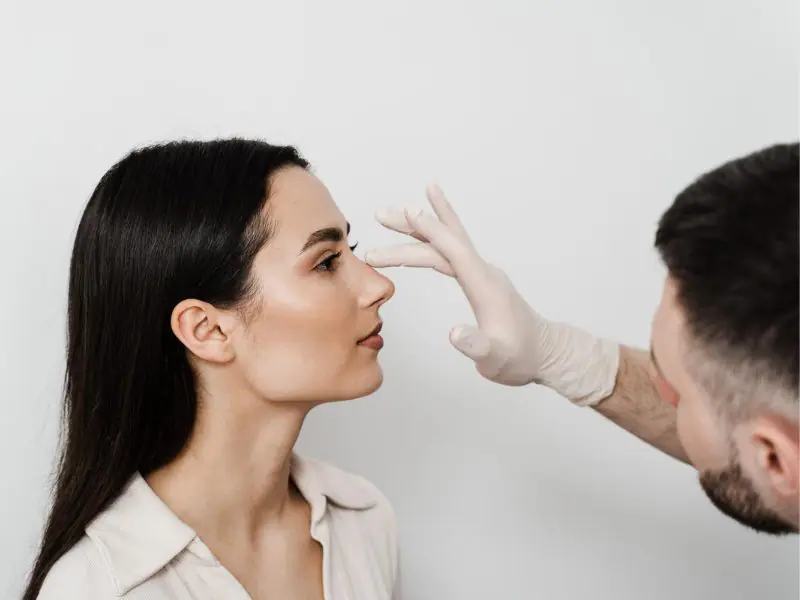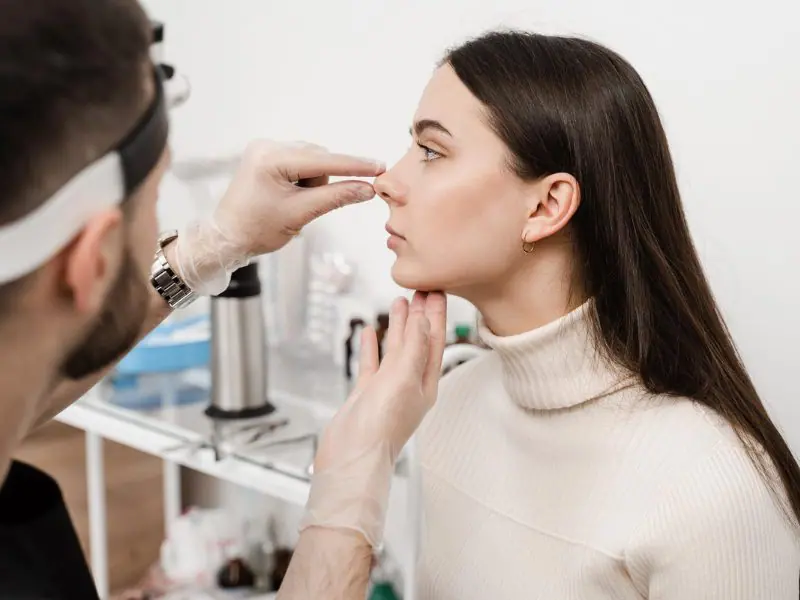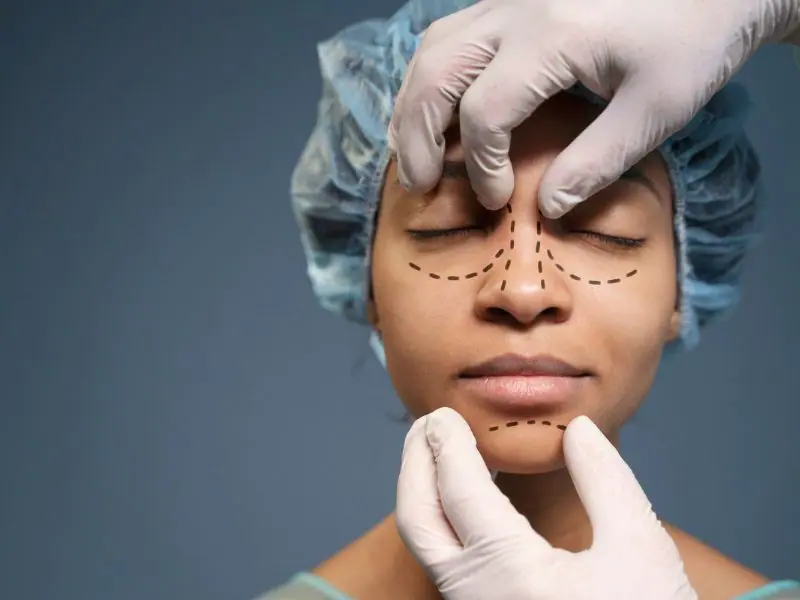The duration of a nose job, or rhinoplasty, can vary depending on the complexity of the procedure, the surgeon’s approach, and the specific needs of the patient. However, the typical timeline for getting a rhinoplasty can be broken down into several stages, from the initial consultation to full recovery. We want to know how long does it take to get a nose job?
The timeline for getting a nose job (rhinoplasty) after a consultation can vary depending on several factors. After your initial consultation with a plastic surgeon, the surgeon will assess your medical history, discuss your goals and expectations, and provide information about the procedure.
How long does it take to get a nose job in Iran or Turkey?
- Surgeon’s availability: Some surgeons may have a busy schedule, so you might need to wait until there’s an opening for your procedure.
- Pre-surgery requirements: Depending on the surgeon and the medical facility, you might need to complete certain pre-operative steps, such as medical tests or consultations with other specialists, before scheduling the surgery.
- Personal scheduling: Your availability and the surgeon’s schedule need to align. Some people prefer to schedule surgeries during specific times of the year when they can take time off work or have a more relaxed schedule for recovery.
- Insurance approval (if applicable): If your Rhinoplasty in Iran is considered a medical necessity due to functional issues, you might need to go through an insurance approval process, which can add time to the overall timeline.
- Preparation time: After scheduling the surgery, there might be a period of time during which you need to prepare for the procedure. This could involve discontinuing certain medications, adjusting lifestyle factors, and making arrangements for the recovery period.
It’s essential to have realistic expectations and to follow your surgeon’s advice regarding the timeline. Rushing through the process may not be in your best interest, as proper preparation and scheduling are crucial for a successful outcome and smooth recovery.
Keep in mind that this information is general, and the specifics can vary based on individual circumstances, the surgeon’s policies, and regional healthcare practices. It’s crucial to have open communication with your surgeon and their staff to get accurate and personalized information.
Click (How to get rid of bulbous nose tip naturally?) to read the article.
Avamedi offers multiple other services such as Rhinoplasty in Turkey
How Can I Prepare for My Rhinoplasty Consultation?
Preparing for your rhinoplasty consultation is essential to ensure a productive and informative meeting with your surgeon. Here are some tips to help you prepare:
- Research Surgeons: Look for board-certified plastic surgeons or facial plastic surgeons with experience in rhinoplasty. Read reviews, check credentials, and consider getting recommendations from trusted sources.
- Define Your Goals: Clarify your reasons for seeking rhinoplasty and what specific changes you would like to see in your nose. Having a clear understanding of your goals will help guide the discussion during the consultation.
- Bring Photos for Reference: Bring photos of noses you find attractive or examples of what you’re hoping to achieve. This can help convey your aesthetic preferences and provide a visual reference for the surgeon.
- Compile Medical Information: Create a list of your medical history, including any previous surgeries, medical conditions, allergies, and current medications. This information is crucial for the surgeon to assess your candidacy for the procedure.
- Prepare Questions: Write down any questions or concerns you have about the rhinoplasty procedure, the surgeon’s experience, the recovery process, and potential outcomes. This ensures that you cover all essential aspects during the consultation.
- Understand the Procedure: Familiarize yourself with the basics of rhinoplasty so that you can have an informed discussion with the surgeon. Understand the techniques involved and what changes are feasible.
- Consider Functional Issues: If you have any functional concerns, such as difficulty breathing through your nose, make sure to communicate this to the surgeon. Rhinoplasty can address both aesthetic and functional issues.
- Bring a Supportive Friend or Family Member: Consider bringing a friend or family member to the consultation. They can provide support, help remember details discussed during the meeting, and offer a different perspective.
- Review Financial Considerations: Be aware of your budget and inquire about the total cost of the procedure, including surgeon fees, facility fees, and anesthesia fees. Discuss payment options and whether your insurance covers any aspects of the surgery.
- Avoid Blood-Thinning Medications: In the days leading up to the consultation, avoid blood-thinning medications and supplements, as these can increase the risk of bleeding.
- Dress Comfortably: Wear comfortable clothing to the consultation, as the surgeon may need to examine your nose. Avoid wearing makeup or accessories that could interfere with the examination.
- Bring Relevant Medical Records: If you have relevant medical records, such as imaging studies of your nose or records from previous surgeries, bring them to the consultation.
- Be Open and Honest: Be open and honest about your expectations, concerns, and medical history. Clear communication is crucial for a successful rhinoplasty experience.
Remember, the consultation is an opportunity for both you and the surgeon to assess each other and determine if rhinoplasty is the right choice. Take your time, ask questions, and ensure you feel comfortable with the surgeon and their recommendations.
Click (Unraveling the Success Rate of Rhinoplasty In Iran) to read the article.
What Happens During a Rhinoplasty Consultation?
A rhinoplasty consultation involves a comprehensive discussion between you and the surgeon to assess your goals and medical history and determine the feasibility of the procedure. Here’s a breakdown of what typically happens during a rhinoplasty consultation:
- Introduction and Patient History: The consultation starts with introductions, and you’ll be asked to provide a detailed medical history. This includes information about previous surgeries, medications, allergies, and any existing medical conditions.
- Discussion of Goals: You’ll have the opportunity to discuss your reasons for considering rhinoplasty and your aesthetic goals. Be specific about what you like and dislike about your nose and what changes you hope to achieve.
- Physical Examination: The surgeon will conduct a physical examination of your nose. This involves assessing the external shape, size, and proportions of your nose in relation to your facial features. They may also examine the internal nasal structures to evaluate breathing function.
- Photographs: The surgeon may take photographs of your face from various angles. These photos serve as a visual record and help in treatment planning. They are also useful for computer imaging to show potential outcomes.
- Computer Imaging (if applicable): Some surgeons use computer imaging software to provide a simulated visual representation of the potential results. This can be a helpful tool in aligning expectations and understanding what changes are realistic.
- Discussion of Surgical Options: The surgeon will explain the different surgical techniques and approaches they might use based on your goals and the specific characteristics of your nose.
- Risks and Benefits: The surgeon will discuss the potential risks and complications associated with rhinoplasty. They will also outline the expected benefits and outcomes.
- Medical Clearance and Pre-operative Requirements: Depending on your health status, the surgeon may request medical clearance from your primary care physician. You may be given specific pre-operative instructions, such as discontinuing certain medications or avoiding certain activities.
- Cost and Financial Information: The surgeon’s fees, facility fees, and anesthesia fees will be discussed, and you’ll receive information on the total cost of the procedure. Payment options, including financing, may also be discussed.
- Timeline and Recovery: The surgeon will provide an overview of the timeline, including the date of the surgery, pre-operative appointments, and the expected recovery period. They’ll explain what to expect during the post-operative phase.
- Questions and Clarifications: This is an opportunity for you to ask any questions you may have and seek clarification on any aspects of the procedure. It’s crucial to feel well-informed and comfortable with the decision.
- Follow-Up and Next Steps: The surgeon may schedule a follow-up appointment to discuss your decision further or address any additional concerns that may arise after the initial consultation.
Remember that consultation is a two-way communication process, and it’s essential to be honest about your expectations and ask any questions you may have. If you’re considering rhinoplasty, seeking a consultation with an experienced and board-certified plastic surgeon is crucial.
Click (Nose filler danger zones) to read the article.
What Results Can I Expect After My Rhinoplasty?
The results of rhinoplasty can vary depending on several factors, including the surgeon’s skill, your specific anatomy, and your healing process. Here are some general expectations regarding the results of rhinoplasty:
- Improved Aesthetics:
Rhinoplasty is often performed to enhance the aesthetic appearance of the nose. This may include changes in size, shape, symmetry, and proportions to better harmonize with your facial features.
- Correction of Structural Issues:
If you have structural issues that affect breathing or other functional aspects of the nose, rhinoplasty can address these concerns. This may involve reshaping the internal nasal structures to improve airflow.
- Natural-Looking Results:
A skilled surgeon aims to provide results that look natural and complement your overall facial appearance. The goal is to create a nose that appears as if it has always been a natural part of your face.
- Reduction of Nasal Humps or Bumps:
Many people seek rhinoplasty to address a prominent nasal hump or bump. The surgeon can reshape the nasal bridge to achieve a smoother contour.
- Refinement of Nasal Tip:
Rhinoplasty can refine the nasal tip by adjusting the cartilage and tissue. This may involve reshaping, lifting, or defining the tip to achieve a more desirable appearance.
- Improved Symmetry:
The surgeon will work to create more excellent symmetry between the two sides of your nose, addressing any asymmetries that may be present before the plastic surgery.
- Enhanced Confidence:
For many individuals, rhinoplasty results in increased self-confidence and satisfaction with their overall facial appearance. This can positively impact various aspects of life, including social interactions and self-esteem.
- Gradual Healing and Final Results:
The initial results of rhinoplasty will be visible once the initial swelling and bruising subside. However, it’s important to note that the final results may take several months to a year to manifest as the tissues heal and settle fully.
- Patient Involvement in the Process:
Your involvement in the pre-operative and post-operative processes, including following post-operative care instructions and attending follow-up appointments, can influence the outcome. Adhering to the surgeon’s guidance is crucial for optimal results.
It’s essential to have realistic expectations and to communicate openly with your surgeon during the consultation about your goals and concerns. Additionally, before undergoing rhinoplasty, it’s advisable to view before-and-after photos of previous patients treated by the surgeon to gain an understanding of their aesthetic approach and the potential outcomes of the procedure.
How Can I Promote Healing After Rhinoplasty?
Promoting proper healing after rhinoplasty is essential for achieving the best results and minimizing complications. Here are some general tips to help you during the recovery process:
- Follow Post-Operative Instructions:
Strictly adhere to the post-operative instructions provided by your surgeon. These instructions will guide you on how to care for your nose, manage discomfort, and avoid activities that could compromise healing.
- Rest and Elevate Your Head:
Rest is crucial for the initial healing phase. Keep your head elevated, especially when sleeping, to reduce swelling and promote proper drainage. Use an extra pillow to keep your head elevated at a 30-45-degree angle.
- Apply Cold Compresses:
Cold compresses can help minimize swelling and bruising. Use them as directed by your surgeon, typically during the first few days after surgery.
- Take Prescribed Medications:
Take any prescribed medications, such as pain relievers and antibiotics, as directed by your surgeon. These medications help manage pain and prevent infection.
- Avoid Strenuous Activities:
Refrain from strenuous physical activities, including heavy lifting and intense exercise, for the duration specified by your surgeon. These activities can increase blood flow to the face and exacerbate swelling.
- Protect Your Nose:
Be cautious about bumping or injuring your nose during the initial healing phase. Avoid activities that could put your nose at risk, and follow any instructions regarding the use of protective devices, such as a splint or cast.
- Stay Hydrated:
Drink plenty of fluids to stay hydrated. Proper hydration supports the healing process and helps maintain overall well-being.
- Eat a Healthy Diet:
Consume a nutritious diet rich in vitamins and minerals to support your body’s healing process. Foods with anti-inflammatory properties, such as fruits and vegetables, can be beneficial.
- Avoid Smoking and Alcohol:
Smoking can impair healing and increase the risk of complications. Avoid smoking and limit alcohol intake during the recovery period.
- Attend Follow-Up Appointments:
Attend all scheduled follow-up appointments with your surgeon. These appointments are essential for monitoring your progress, removing any dressings or stitches, and addressing any concerns.
- Use Sun Protection:
Protect your nose from the sun by wearing a wide-brimmed hat and using sunscreen. Sun exposure can exacerbate swelling and pigmentation changes.
- Practice Patience:
Understand that the full results of rhinoplasty may take months to become apparent. Be patient and allow your body the time it needs to heal and the tissues to settle.
If you have any concerns or experience unusual symptoms during the recovery process, contact your surgeon promptly. Each individual’s healing process is unique, so it’s important to follow your surgeon’s guidance and communicate openly about your progress.
Click (The Ultimate Guide to Nose Job in Iran or Turkey) to read the article.
How Long Do Rhinoplasty Results Last?
The results of rhinoplasty are generally considered permanent, but it’s important to note that the nose will continue to evolve due to the natural aging process. The initial changes made during rhinoplasty are long-lasting, and patients can enjoy the benefits of the procedure for many years. However, factors such as aging, gravity, and changes in skin elasticity may subtly alter the appearance of the nose over time.
Here are some considerations regarding the longevity of rhinoplasty results:
- Stability of Results:
The majority of changes made during rhinoplasty are stable and enduring. The reshaping of bone and cartilage and adjustments to the nasal tissues contribute to the long-term outcome.
- Aging Process:
As individuals age, the skin tends to lose elasticity, and facial structures can change. While the effects of rhinoplasty are lasting, the natural aging process can affect the overall appearance of the face, including the nose.
- Postoperative Care:
Adhering to postoperative care instructions and leading a healthy lifestyle can contribute to the longevity of results. Avoiding activities that could cause trauma to the nose and maintaining a stable weight can positively impact the outcome.
- Individual Variability:
Each person’s body responds differently to surgery, and the longevity of rhinoplasty results can vary. Genetic factors, overall health, and how well a person cares for their nose postoperatively can influence the lasting impact of the procedure.
- Revision Surgery:
In some cases, individuals may choose to undergo Revision Rhinoplasty in Iran if they are dissatisfied with the initial results or if changes occur over time. Revision surgery is a consideration for those seeking further refinement or correction.
It’s crucial to have realistic expectations about the permanence of rhinoplasty results. While the primary changes made during the procedure are durable, subtle shifts in appearance may occur as part of the natural aging process.
It’s recommended to maintain regular follow-up appointments with your surgeon to monitor the long-term outcomes and discuss any concerns you may have. Additionally, protecting your nose from trauma, avoiding smoking, and adopting a healthy lifestyle can contribute to the longevity of your rhinoplasty results.
In summary, while the surgery itself only takes a few hours, the overall process from consultation to full recovery can span several months. Most patients feel comfortable returning to normal activities within 1 to 2 weeks, but patience is required for final results to fully settle.










